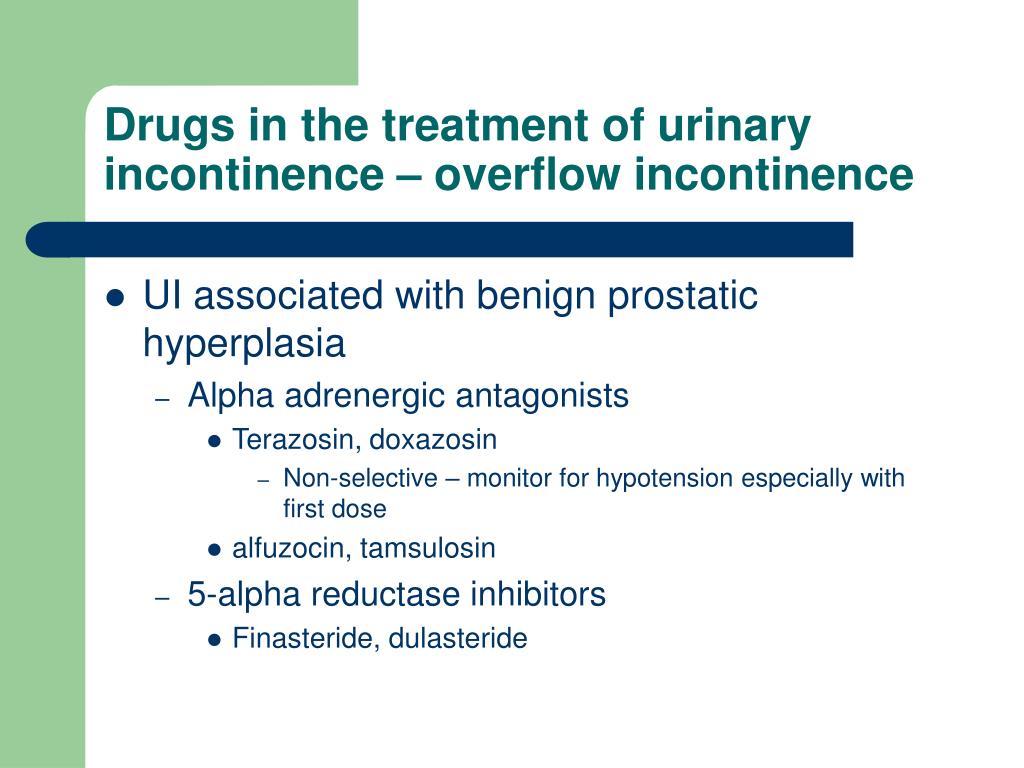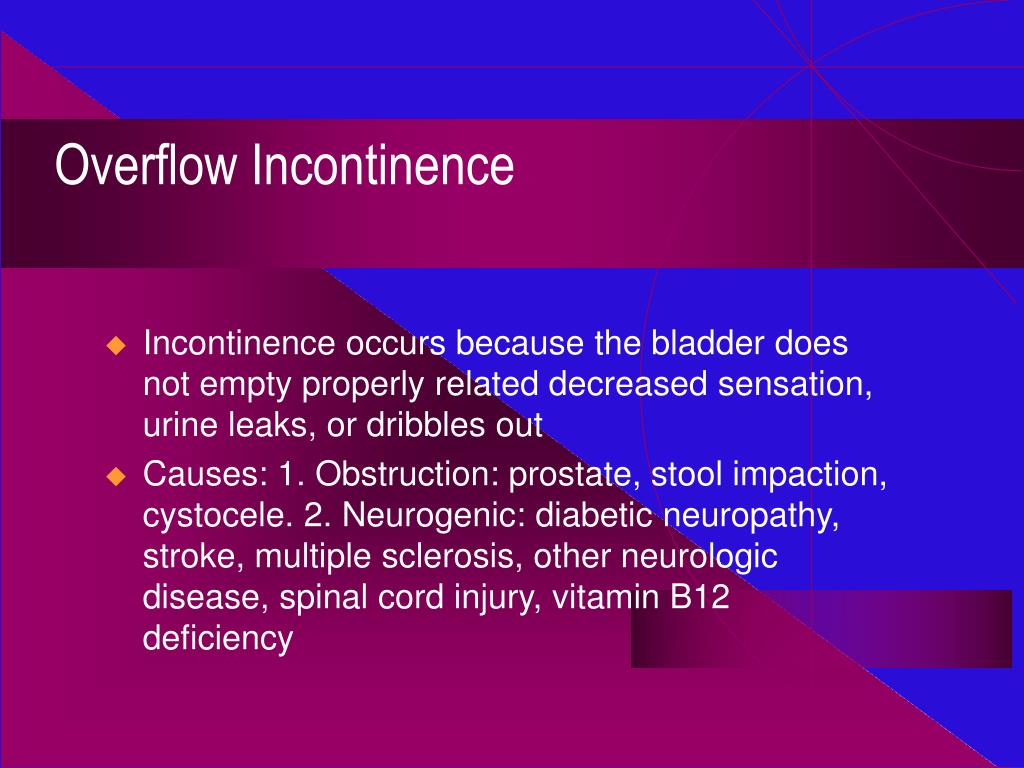

In: Proceedings of the second ACM SIGCOMM workshop on hot topics in software defined networking. Shin S, Gu G (2013) Attacking software-defined networks: a first feasibility study. In: IFIP international conference on ICT systems security and privacy protection. Overflow incontinence is caused by impaired detrusor contractility, bladder outlet obstruction, or both, resulting in overdistension of the bladder. This problem can be caused by a variety of factors that affect the muscles and nerves of the bladder. Such attacks are serious security threats in SDN, as they can be easily launched by an.
OVERFLOW INCONTINENCE SDN INSTALL
With urinary incontinence, urine leaks out of the body. Flow table overflow attacks consume flow tables that forward and process packets of flows in software-defined networking (SDN), which results in no space left for other flows to install flow rules and thus incur network denial-of-service (DoS). Pascoal TA, Dantas YG, Fonseca IE, Nigam V (2017) Slow TCAM exhaustion DDOS attack. Urinary incontinence is an unintentional loss of control in releasing urine (pee) from the bladder. ACM SIGCOMM Comput Commun Rev 38(2):69–74 McKeown N, Anderson T, Balakrishnan H, Parulkar G, Peterson L, Rexford J, Shenker S, Turner J (2008) Openflow: enabling innovation in campus networks. Overflow incontinence occurs when you are unable to completely empty your bladder. In: Proceedings of the second ACM SIGCOMM workshop on hot topics in software defined networking. Overflow incontinence is one of several different types of incontinence, the inability to control urination. Kreutz D, Ramos F, Verissimo P (2013) Towards secure and dependable software-defined networks. What Is Overflow Incontinence Overflow incontinence is the involuntary leaking of urine as the result of an overfull bladder. In: 2013 21st IEEE international conference on network protocols (ICNP). Kloti R, Kotronis V, Smith P (2013) Openflow: a security analysis. In: International conference on security and privacy in communication systems. All of these depends on the condition and severity of the obstruction.Cao J, Xu M, Li Q, Sun K, Yang Y, Zheng J (2017) Disrupting SDN via the data plane: a low-rate flow table overflow attack.

Looks at types of incontinence, including stress, urge, overflow, total. Additionally, you may feel nauseous and a fever might appear. Search: Kaiser Permanente School Of Medicine 2019 2020 Sdn. There may be an increased urge to go to the toilet to urinate and incontinence. Urge incontinence occurs when there is an urgent need to void causing involuntary leakage before one reaches the toilet. The bladder never empties properly and fills up more quickly due to the residual volume. You may not get the message to go to the toilet either. Last modified on April 27th, 2023 What Is Overflow Incontinence Overflow incontinence happens when the bladder doesn’t empty properly, and so it leaks out. Alternative signs or symptoms involves pain while urinating. Originally published on: April 6th, 2017. The main symptom is pain, either on the sides and back (commonly known as flank pain), groin and abdomen. Hydrophrenosis might not show any signs or symptoms. In both cases the bladder doesn’t empty well and continues to fill, and over time the muscles of the bladder become overstretched and lose. This might lead to an overflow, or it experiences a reflux which can cause swelling in the renal pelvis. Overflow incontinence can also occur as the result of a blockage in the urethra or bladder, including a tumor, scar tissue, or (in men) an enlarged prostate or (in women) a dropped or prolapsed bladder. when there is too much urine, it forms a build up when there is an obstruction. Eventually, the bladder gets filled with urine which exits from the body through the urethra. The renal pelvis collects urine and it goes down the ureter tube and enters the bladder. The types of incontinence include urge incontinence, stress incontinence, overflow incontinence, and mixed incontinence. There is urine when the kidneys are functioning normally to filter blood and remove excess waste and fluid. Overflow incontinence is the involuntary loss of urine associated with overdistension of the bladder due to a high volume of urine. The primary purpose of the urinary tract is to excrete waste and excess fluid out from the body. The urinary tract is made up of four separate parts, the kidneys, the ureters, the bladder, and urethra. This can affect either one or in both of the kidneys. The kidney is unable to excrete urine to the bladder because there is an blockage. 2, 5 Chronic overflow incontinence is common in. Hydronephrosis develops when there swelling in the kidney due to an accumulation of urine. Overflow incontinence is caused by impaired detrusor contractility, bladder outlet obstruction, or both, resulting in overdistension of the bladder.


 0 kommentar(er)
0 kommentar(er)
